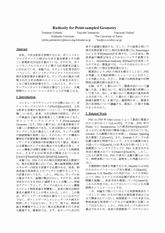Radiosity for Point-Sampled Geometry
Proc. Pacific Graphics 2004, pp. 152-159
Yoshinori Dobashi 1 Tsuyoshi Yamamoto 1 Tomoyuki Nishita 2
1Hokkaido University, 2The University of Tokyo

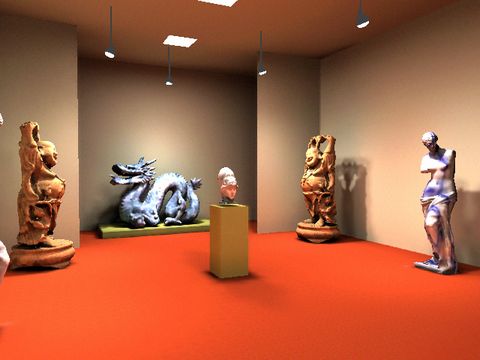
Abstract
In this paper, we propose a radiosity method for the
point-sampled geometry to compute diffuse interreflection
of light. Most traditional radiosity methods subdivide the
surfaces of objects into small elements such as quadrilaterals.
However, the point-sampled geometry includes no explicit
information about surfaces, presenting a difficulty in
applying the traditional approach to the point-sampled geometry.
The proposed method addresses this problem by
computing the interreflection without reconstructing any
surfaces. The method realizes lighting simulations without
losing the advantages of the point-sampled geometry.
Download
Examples
| Three spheres are placed in a simple room. The color bleeding effects are clearly observed on the spheres and the ceiling. Surfels are adaptively added according to the intensity distribution. Total number of surfels: 15,748. Total computation time: 38 sec. (effective area computation: 4 sec., construction of hierarchy: 1 sec., and the radiosity calculation: 32 sec.) (Pentium4 2.8GHz) |
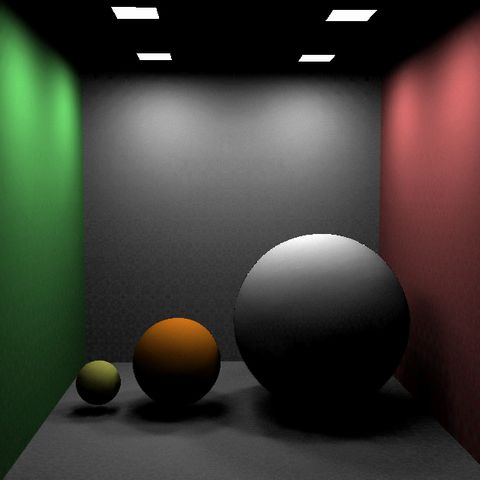
|
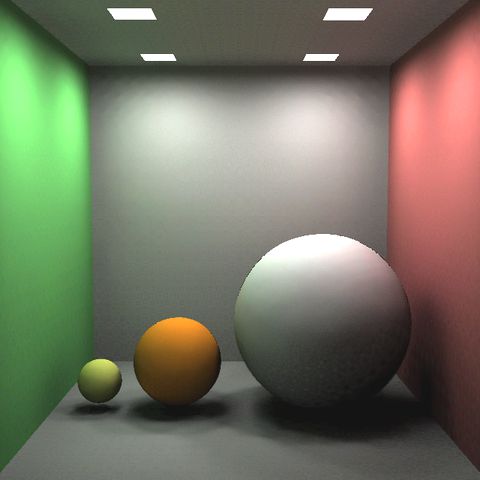
|
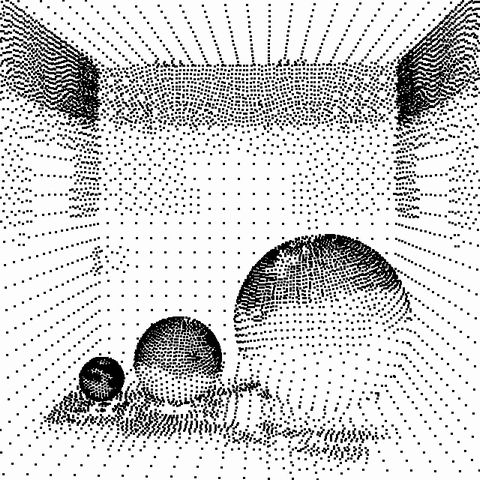
|

|
||||
| direct light only | with radiosity | surfels | video (mpg) |
| Two texture mapped bunnies are placed in a simple room. Due to the reflections from the green walls, the bunnies have become greenish. The complex patterns of shadows of the bunnies on the floor are accurately displayed. Total number of surfels: 72,068. Total computation time: 116 sec. (effective area computation: 68 sec., construction of hierarchy: 1 sec., and the radiosity calculation: 47 sec.) (Pentium4 2.8GHz) |
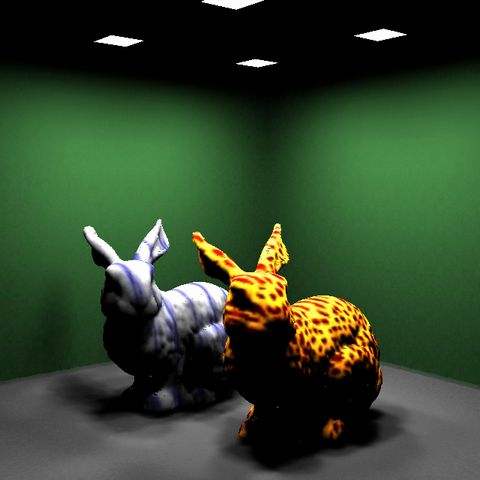
|

|
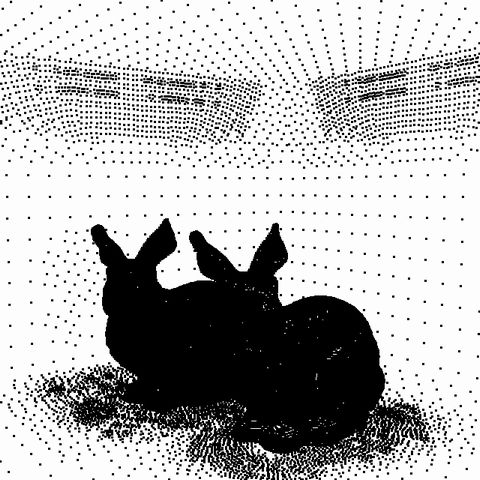
|

|
||||
| direct light only | with radiosity | surfels | video (mpg) |
| This example shows the lighting simulation of a gallery of point models. The room and objects have become reddish due to the reflections from the floor. The details of the objects can be well displayed by taking into account the interreflection. Total number of surfels: 351,686. Total computation time: 2,541 sec. (= 42 min., approximately) (effective area computation: 354 sec., construction of hierarchy: 10 sec., and the radiosity calculation: 2,177 sec.) (Pentium4 2.8GHz) |
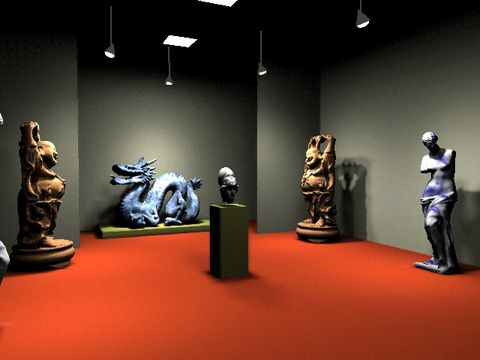
|

|
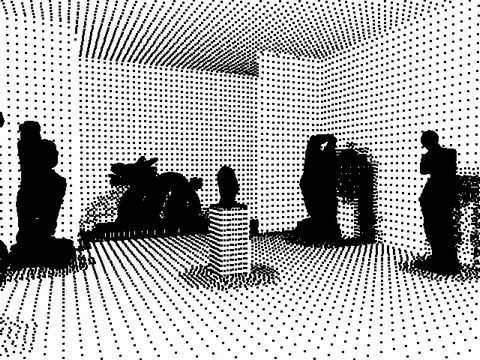
|

|
||||
| direct light only | with radiosity | surfels | video (mpg) |
| Extension to specular reflection. This examples is not included in the paper. |
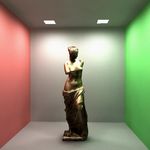
|
| video (mpg) |
Citation
@article{doba2004,
author = {Yoshinori Dobashi and Tsuyoshi Yamamoto and Tomoyuki Nishita},
title = {Radiosity for Point-Sampled Geometry},
journal = {Proc. Pacific Graphics},
year = {2004},
pages = {152-159}
}

